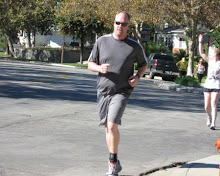Appel, J. (11/28/2006). Report: Students struggle with information literacy. eSchoolnews.com
Ascione, L. (4/1/2006). States erratic on IT literacy. eSchoolnews.com.
Biggs, J., (1999). Teaching for Quality Learning at University Society for Research into Higher Education and Open University Press, Buckingham.
Chang, C., (2008). Development and validation of the Computer Technology Literacy Self-Assessment Scale for Taiwanese Elementary School Students. Adolescence 43 Fall 2008, 623-634.
Davidson-Shivers, G., (2009). Frequency and Types of Interactions in Online Instruction. . Journal of Interactive Online Learning 8(1) 2009, 23-40.
DiPietro, M., Ferdig, R., Black, E., Preston, M. (2008). Best practices in teaching K-12 online: Lessons learned from Michigan Virtual School teachers. Journal of Interactive Online Learning 7(1) 2008, 10-35.
eSchool News staff and wire service reports. (9/10/08). Report: Retool instruction, or U.S. will fail. eSchoolnews.com.
Heilesen, S., Josephsen, J., (2007). E-learning: Between augmentation and disruption? Computers and Education 50(2008), 525-534.
Hislop, G.W. (2001). Does teaching online take more time? Paper presented at the 31st ASEE/IEEE Frontiers in Education Conference, October 10-13, 2001, Reno, NV. Session TIF, 23-27.
Hunt, N., Hughes, J., Rowe, G., (2002). Formative Automated Computer Testing (FACT). British Journal of Educational Technology, 33(5), 525-535.
Jarmon, L., Traphagan, T., Mayrath, M., Trivedi, A. (January 2009). Virtual world teaching, experimental learning and assessment: An Interdisciplinary communication course in Second Life. Computers and Education 53 (2009), 162-182.
Merchant, G., (2009). Literacy in virtual worlds. Journal of Research in Reading 32 (1) 2009, 38-56.
Mioduser, D., Nachmias, R., Oren, A., Lahav, O., (8/11/1999). Web-based learning environments (WBLE): Current implementation and evolving trends. Journal of Network and Computer Applications (1999) 22, 233-247.
Morgan, V., Toledo, C., (2006). Online Feedback and Student Perceptions. . Journal of Interactive Online Learning 5(3) 2006, 333-340.
North American Council for Online Learning and the Partnership for 21st Century Skills, (November 2006). Virtual Schools and 21st Century Skills. North American Council for Online Learning and the Partnership for 21st Century Skills.
Oliver, M., Carr, D., (2009). Learning in virtual worlds: Using communities of practice to explain how people learn from play. British Journal of Educational Technology, 40 (3), 444-457.
Olson, A. (5/4/09). It’s a virtual life for swine flu-bound Mexicans. MSNBC.com
Omale, N., Hung, W., Luetkehans, L. , Cooke-Plagwitz, J., (2009). Learning in 3-D multiuser virtual environments: Exploring the use of unique 3-D attributes for online problem-based learning. ). British Journal of Educational Technology, 40 (3), 480-495.
Rodriguez, M., Ooms, A., Montanez, M. (2008). Student Perceptions of Online-learning Quality given Comfort, Motivation, Satisfaction, and Experience. Journal of Interactive Online Learning 7(2) 2008, 105-125.
Sieber, V. (2009). Diagnostic online assessment of basic IT skills in 1st-year undergraduates in the Medical Sciences Division, University of Oxford. British Journal of Educational Technology, 40(2), 215-226.
Song, L., Singleton, E., Hill, J., Koh, M. (2003). Improving online learning: Student perceptions of useful and challenging characteristics. Internet and Higher Educations 7(2004), 59-70.
Staff. (10/07/2008). On the way: Nation’s first tech-literacy exam. eSchoolnews.com.
Stansbury, M. (3/26/2009). Six technologies soon to affect education. eSchoolnews.com.
Tuckett, H.W., (1989). Computer literacy, information literacy and the role of the instruction librarian on coping with information illiteracy: Bibliographic literacy for the information age. Ann Arbor, MI: Pierran Press.
Twining, P., (2009). Exploring the educational potential of virtual worlds-Some reflections from the SPP. British Journal of Educational Technology, 40 (3), 496-514.
Warburton, S., (2008). Loving your avatar: identity, immersion and empathy. Liquid Learning.
Warburton, S. & Perez-Garcia, M. (2009). 3D design and collaboration in massively multi-user virtual environments. In D. Russel (Ed), Cases of collaboration in virtual learning environments: processes and interactions. Hershey, PA:IGI Global. Forthcoming April 2009.
Warburton, S., (2009). Second Life in higher education: Assessing the potential for and the barriers to deploying virtual worlds in learning and teaching. British Journal of Educational Technology, 40 (3), 414-426.
Yang, F., Chang, C. (2008). Examining high-school students’ preferences towards learning environments, personal beliefs and concept learning in web-based contexts. Computers and Education 52 (2009), 848-857.
Yang, Z., Liu, Q., (2004). Research and development of web-based virtual online classroom. Computers and Education 48 (2007), 171-184.
Online Discussion
14 years ago

No comments:
Post a Comment